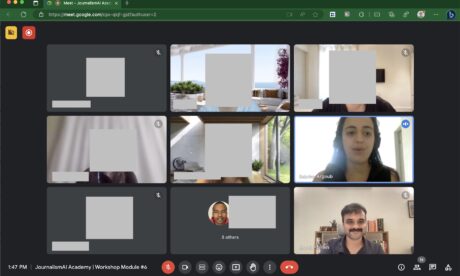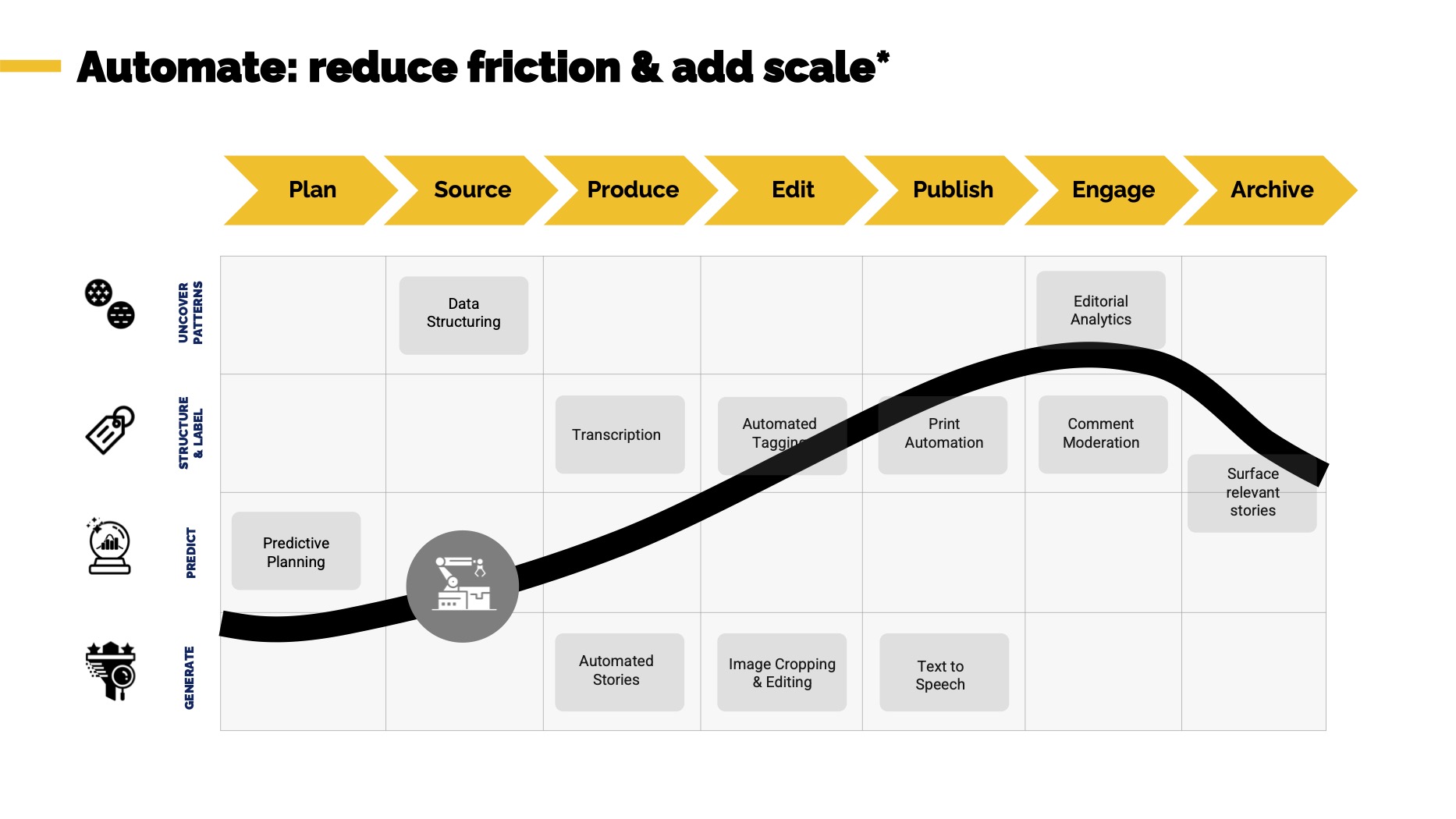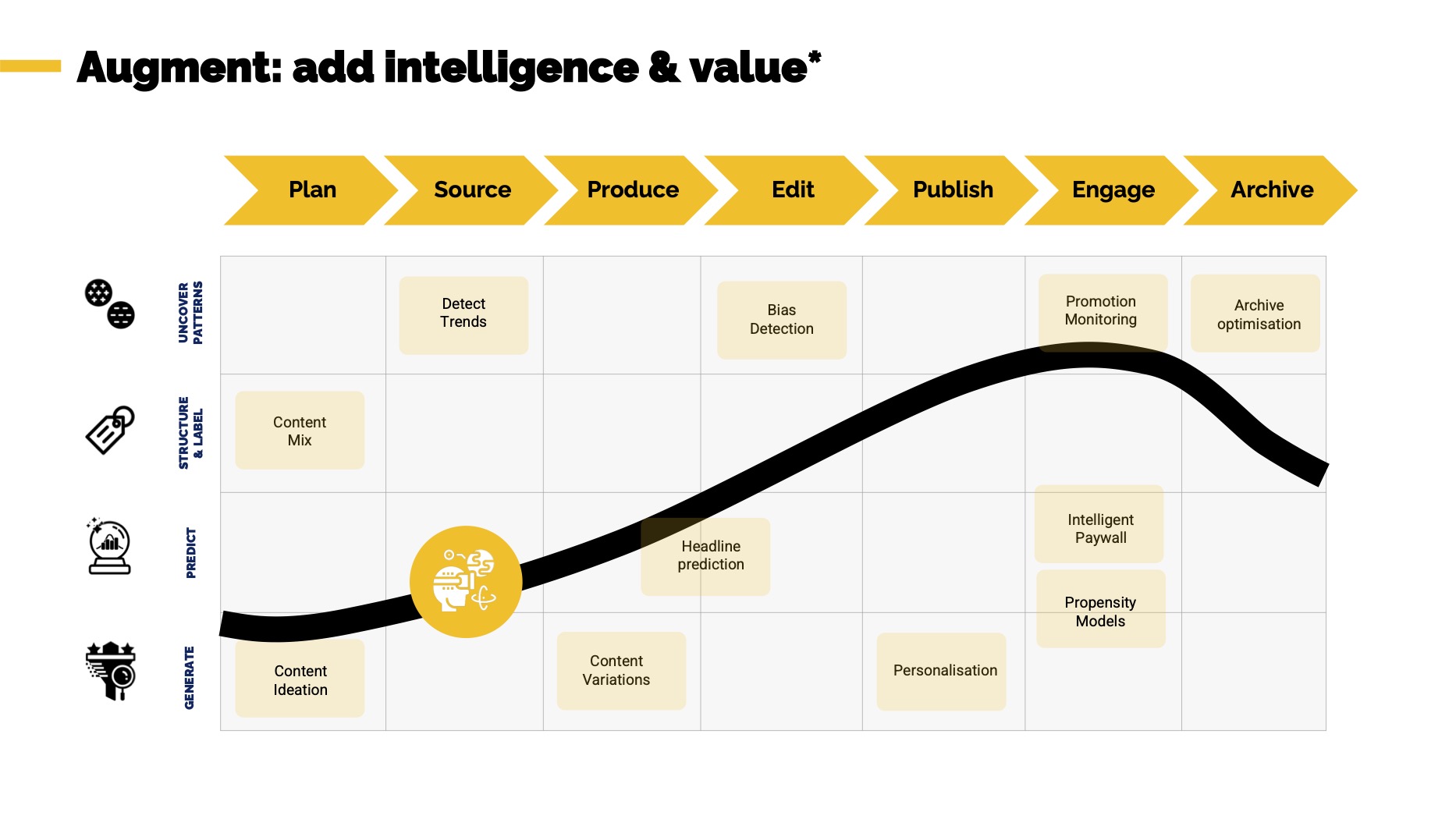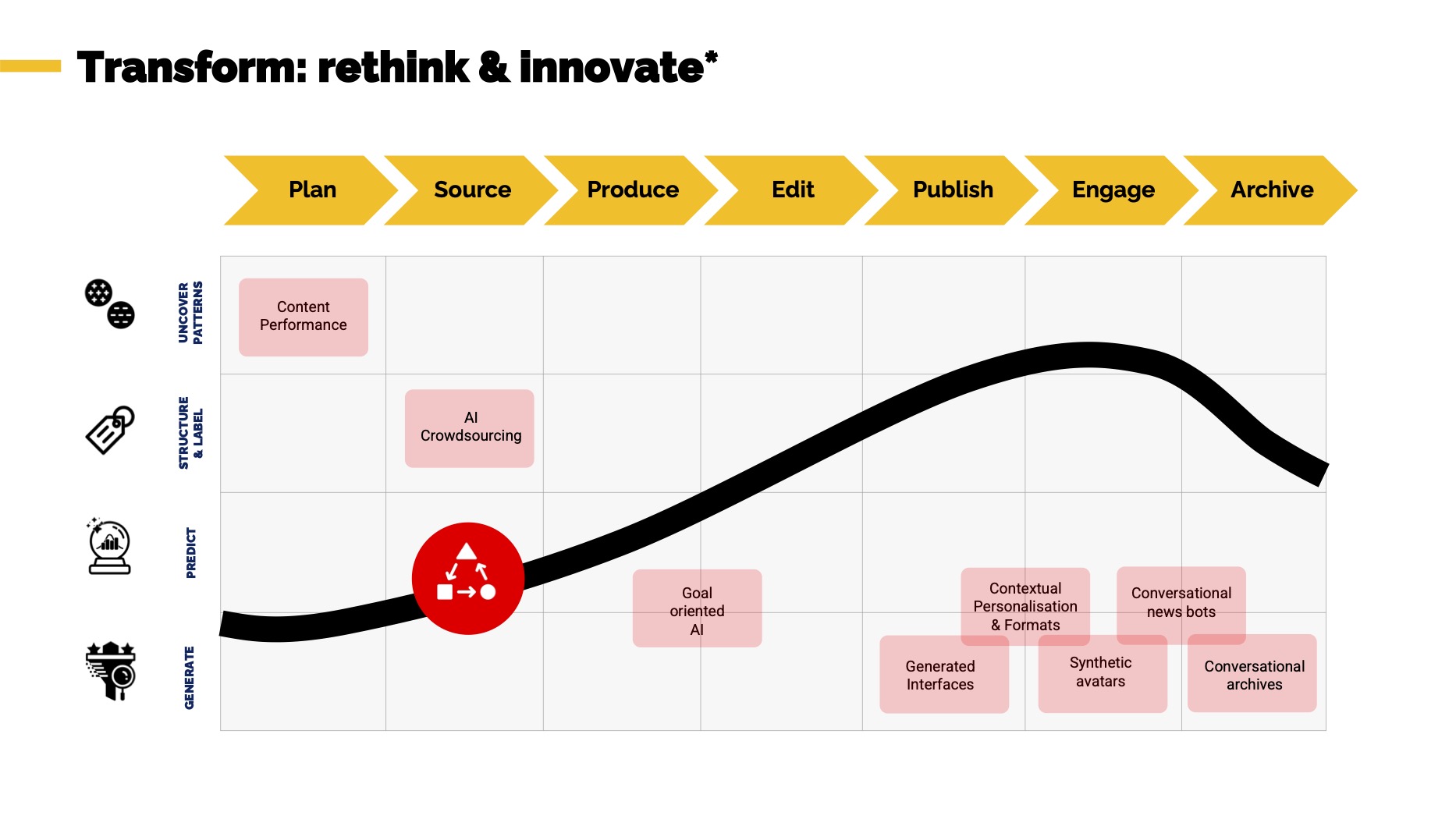[London School of Economics JournalismAI] How to think about AI for news?

Competing against BigTech
A media CXO on OpenAI using their archive to train GPT.
They came, they scraped, they went.
The Generative AI Wave
Let’s evaluate the Generative AI wave through the above lens
Surfing BigTech’s waves
- By building on OpenAI, will a newsroom be able to build competitive differentiation? No. Because everyone else has access to it.
- In fact, LLM is the latest technology that is forcing newsrooms to move more inland into cost-heavy operations like fact-finding and writing the first draft. Many of the You’ll spend days investigating and in seconds it will get scrapped out.
Novelty
- Will we’ve newsrooms and editorial leaders obsessing over the nuances of prompt-writing so we can get it just right? We already do. Will it lead to competitive differentiation? No!
Economic viability
- Can we afford to build our own LLMs? It would take upwards of a few million USD in GPU server costs to train a LLM.
- Can a newsroom afford to build demand-side, i.e., audience-facing LLM products? No. Because the cost of serving a cached page from CDN is 1/1000th the cost of a meaningful Q&A with OpenAI APIs. The unit economics doesn’t add up.
Jobs for the AI Wave
To answer this, I would like to pick up three slides from Ezra Eeman’s presentation at WAN IFRA where he used a clean framework for categorizing how AI can help newsrooms.
He splits all AI investments into three buckets: Automate, Augment, and Transform. We went through each of these tasks and each of the 9 newsrooms tagged whether they’d like to use AI for each of these tasks in their newsroom.
Automate with AI
These are those tasks that can potentially be fully automated leaving staff to pick up more sophisticated tasks. These tend to be repetitive tasks that if automated can boost productivity.

| Task | Want to use | Don’t want to use | Din’t tag |
|---|---|---|---|
| Editorial Analytics | 88.89% | 11.11% | 11.11% |
| Automated tagging | 88.89% | 0.00% | 11.11% |
| Surface relevant stories | 88.89% | 0.00% | 11.11% |
| Transcription | 66.67% | 11.11% | 22.22% |
| Image cropping and editing | 66.67% | 11.11% | 22.22% |
| Predictive planning | 55.56% | 11.11% | 33.33% |
| Text to speech | 55.56% | 22.22% | 22.22% |
| Data structuring | 44.44% | 11.11% | 44.44% |
| Comment moderation | 33.33% | 22.22% | 44.44% |
| Automated stories | 33.33% | 44.44% | 22.22% |
| Print automation | 11.11% | 22.22% | 66.67% |
Augment with AI
These are tasks where a human augmented with AI can perform much better than a human or AI alone. This typically involves combining the pattern recognition of AI in tasks that require deep judgment.

| Task | Want to use | Don’t want to use | Din’t tag |
|---|---|---|---|
| Headline prediction | 88.89% | 0.00% | 11.11% |
| Personalization | 77.78% | 11.11% | 11.11% |
| Content ideation | 66.67% | 0.00% | 33.33% |
| Detect trends | 66.67% | 11.11% | 22.22% |
| Promotion monitoring | 66.67% | 11.11% | 22.22% |
| Bias Detection | 44.44% | 33.33% | 22.22% |
| Archive optimization | 44.44% | 11.11% | 44.44% |
| Content mix | 33.33% | 22.22% | 44.44% |
| Content variation | 33.33% | 22.22% | 44.44% |
| Intelligent paywall and propensity models | 22.22% | 66.67% | 11.11% |
Transform with AI
Finally, there are tasks that can completely be rethought or reinvented for the coming years using AI.

| Task | Want to use | Don’t want to use | Din’t tag |
|---|---|---|---|
| Contextual personalization of formats | 77.78% | 22.22% | 0.00% |
| Content performance | 55.56% | 0.00% | 44.44% |
| AI crowdsourcing | 33.33% | 33.33% | 33.33% |
| Generated interfaces | 33.33% | 22.22% | 44.44% |
| New bots | 33.33% | 22.22% | 44.44% |
| Conversational archives | 33.33% | 22.22% | 44.44% |
| Synthetic avatars | 11.11% | 44.44% | 44.44% |
Other
Below are some other ideas that the cohort came up with:
- Predict the best times to publish
- Archive all PDFs published by the government
- Scrape, clean, warehouse data published by the government
- Recommend experts to interview for a story
- Personalized greetings
- Automate explanatory news
- Automate story writing from datasets
- Auto hyperlink content from archive in new stories and maintain it
- Auto check the company’s style guide
